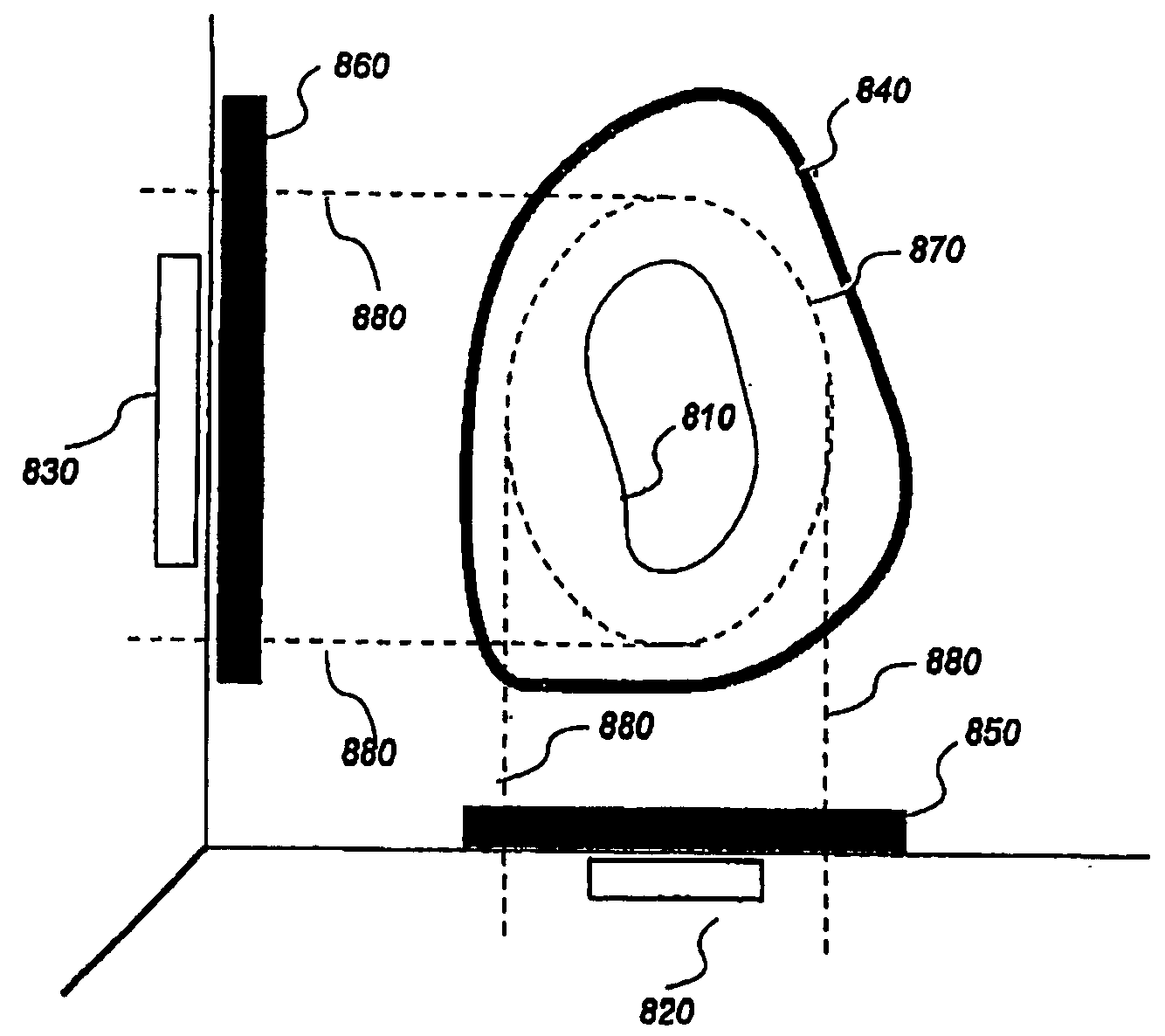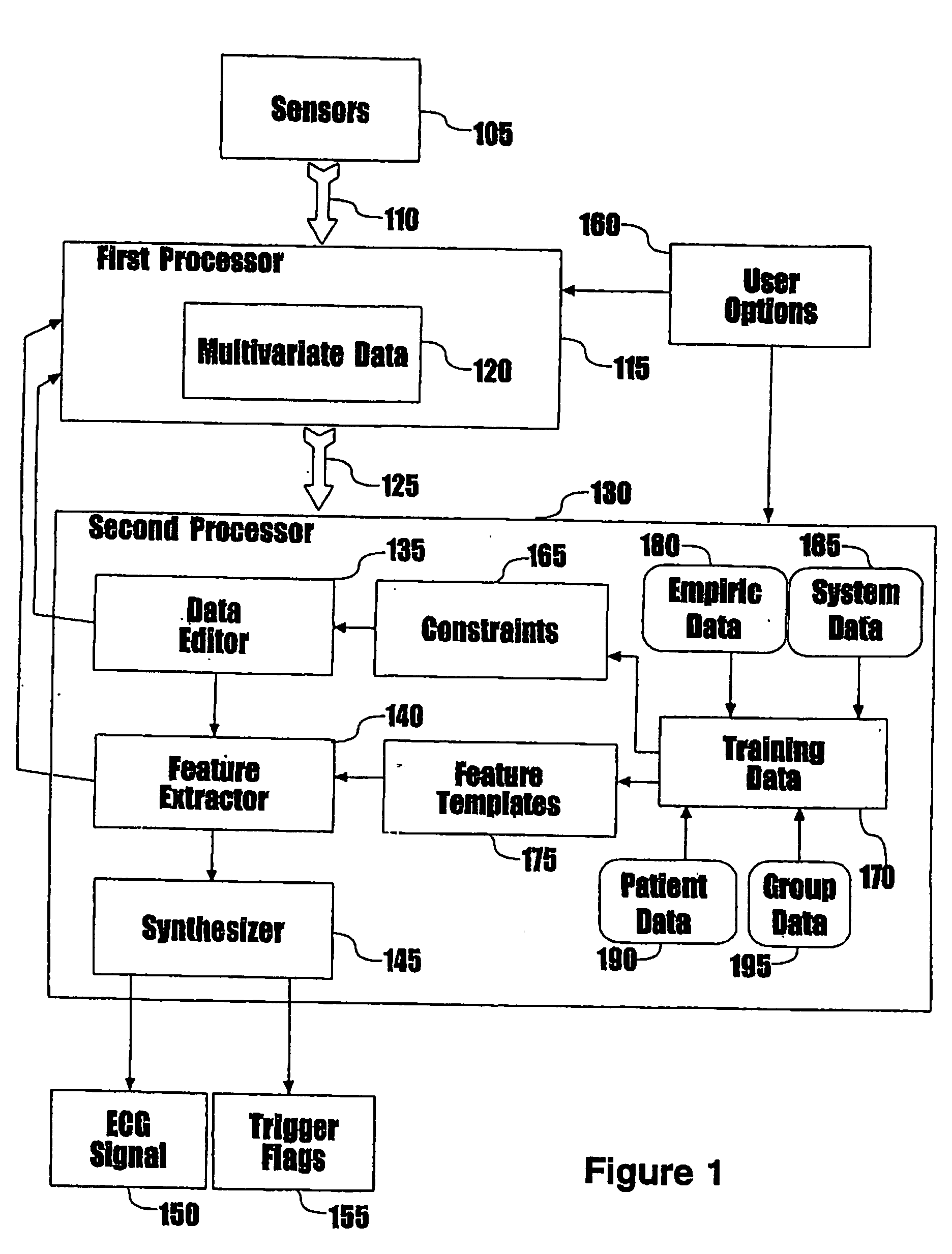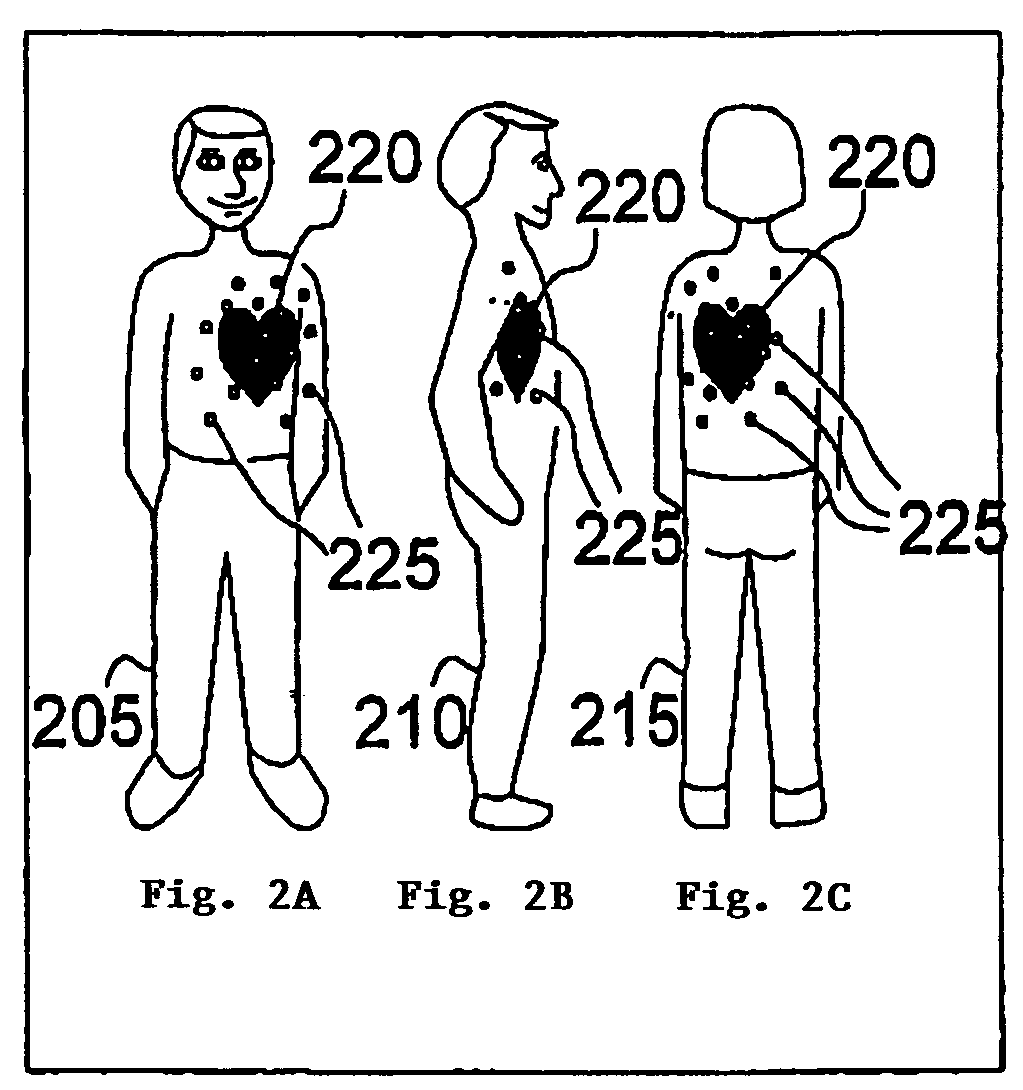Method of and system for signal separation during multivariate physiological monitoring
- Summary
- Abstract
- Description
- Claims
- Application Information
AI Technical Summary
Benefits of technology
Problems solved by technology
Method used
Image
Examples
Embodiment Construction
[0051] A preferred embodiment of the present invention incorporates therein a monitoring system that uses multiple electrodes to create a multivariate characterization of the status of the heart. During a training phase, the system utilizes template signals (the expression “training data” is used interchangeably) to compute values for a separability operator S that may be applied in real-time to subsequent observed data to separate distinct, superimposed signal sources from a desired physiologic signal.
[0052] The template signals are used in the training phase to calibrate the system to separate mixed signals from a specific subject. Subjects differ in various ways, including height, distribution of muscle mass, flow in great vessels, and orientation of the electrical activation of the heart in relation to the other signal sources. The use of template signals takes less than one second, and can be repeated if desired to monitor for drift if conditions change radically (e.g., marked...
PUM
 Login to View More
Login to View More Abstract
Description
Claims
Application Information
 Login to View More
Login to View More - R&D
- Intellectual Property
- Life Sciences
- Materials
- Tech Scout
- Unparalleled Data Quality
- Higher Quality Content
- 60% Fewer Hallucinations
Browse by: Latest US Patents, China's latest patents, Technical Efficacy Thesaurus, Application Domain, Technology Topic, Popular Technical Reports.
© 2025 PatSnap. All rights reserved.Legal|Privacy policy|Modern Slavery Act Transparency Statement|Sitemap|About US| Contact US: help@patsnap.com



